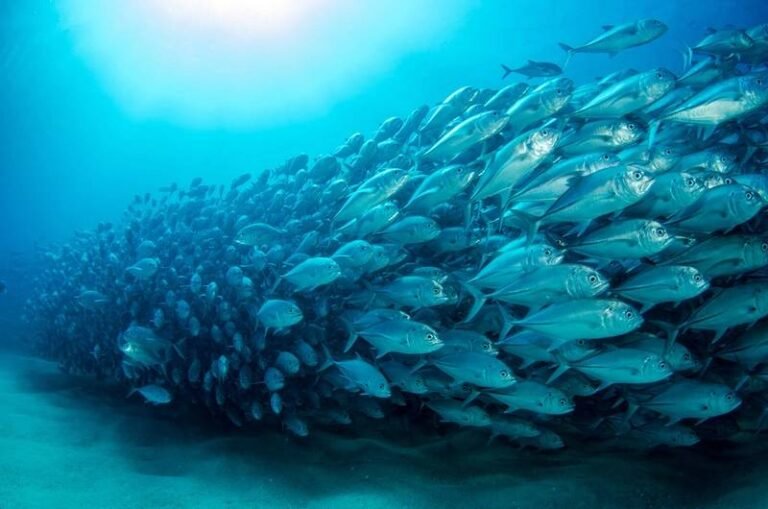Unlocking the Secrets of Schooling Fish Behavior
Researchers from the University of Konstanz and the Max Planck Institute of Animal Behavior in Germany have made a significant breakthrough in understanding the behavior of schooling fish. By developing a cutting-edge 3D eye tracking methodology, they are now able to observe what individual fish are looking at as they swim together in perfect synchrony.
Through their innovative approach, the researchers can analyze millisecond differences in a fish’s body posture and eye position to determine its field of view. Surprisingly, they discovered that each fish maintains one eye focused on the fish in front, while the other eye often scans the surroundings in a different direction.
The ultimate goal of this technology is to unravel the sensory perceptions that drive the decision-making process of schooling fish as they navigate their environment. This research not only sheds light on collective behavior in animals but also holds implications for the field of robotics.
According to researcher Liang Li, “Understanding biological systems better can lead to the development of more advanced robots. By studying how fish interact and move collectively, we can improve our understanding of both natural and artificial intelligence.”
Insights into Social Networks and Collective Behavior
Further studies at the University of Konstanz have delved into the role of social networks in shaping group dynamics among fish. By analyzing how fish respond to perceived risks in their environment, researchers found that the structure of the group plays a pivotal role in collective behavior.
Groups of fish startle more frequently and exhibit greater cohesion when they perceive heightened environmental risks. Interestingly, it is not individual sensitivity to danger cues that drives this behavior, but rather the spatial arrangement of individuals within the group.
By altering the physical proximity of group members, the social connectivity and responsiveness of the collective increase, enabling them to adapt swiftly to changing circumstances. These findings have implications for the development of technologies that harness collective intelligence, such as networked robots.
Individuality and Collective Dynamics
Another study conducted by researchers from the University of Konstanz, the Max Planck Institute of Ornithology, and the University of Cambridge explored the impact of individual traits on collective behavior in fish. They found that fish with a tendency to socialize more displayed lower individual speeds, occupied central positions within the group, and were more likely to follow others.
Groups composed of these socially inclined individuals exhibited higher cohesion, reduced movement, and enhanced coordination compared to groups with less social and faster individuals. This research could offer insights into the emergence of complex collective behaviors across different scales, with implications for conservation, fisheries management, and the design of bio-inspired robot swarms.
Ultimately, these studies not only deepen our understanding of animal behavior but also hold promising applications for various fields, from robotics to human social dynamics. By unraveling the mysteries of collective behavior in schooling fish, researchers are paving the way for new technologies and insights into the complexities of group interactions.

